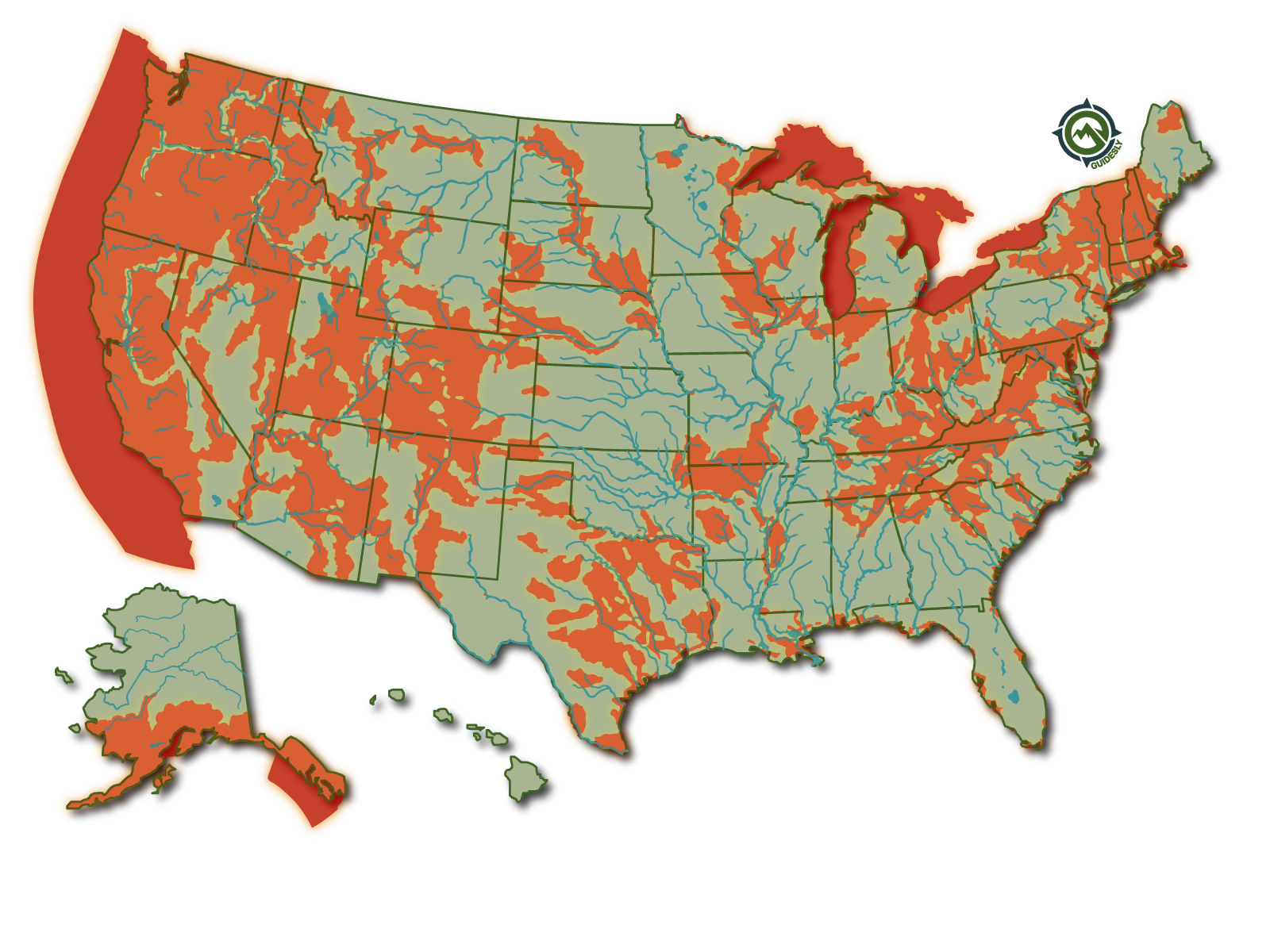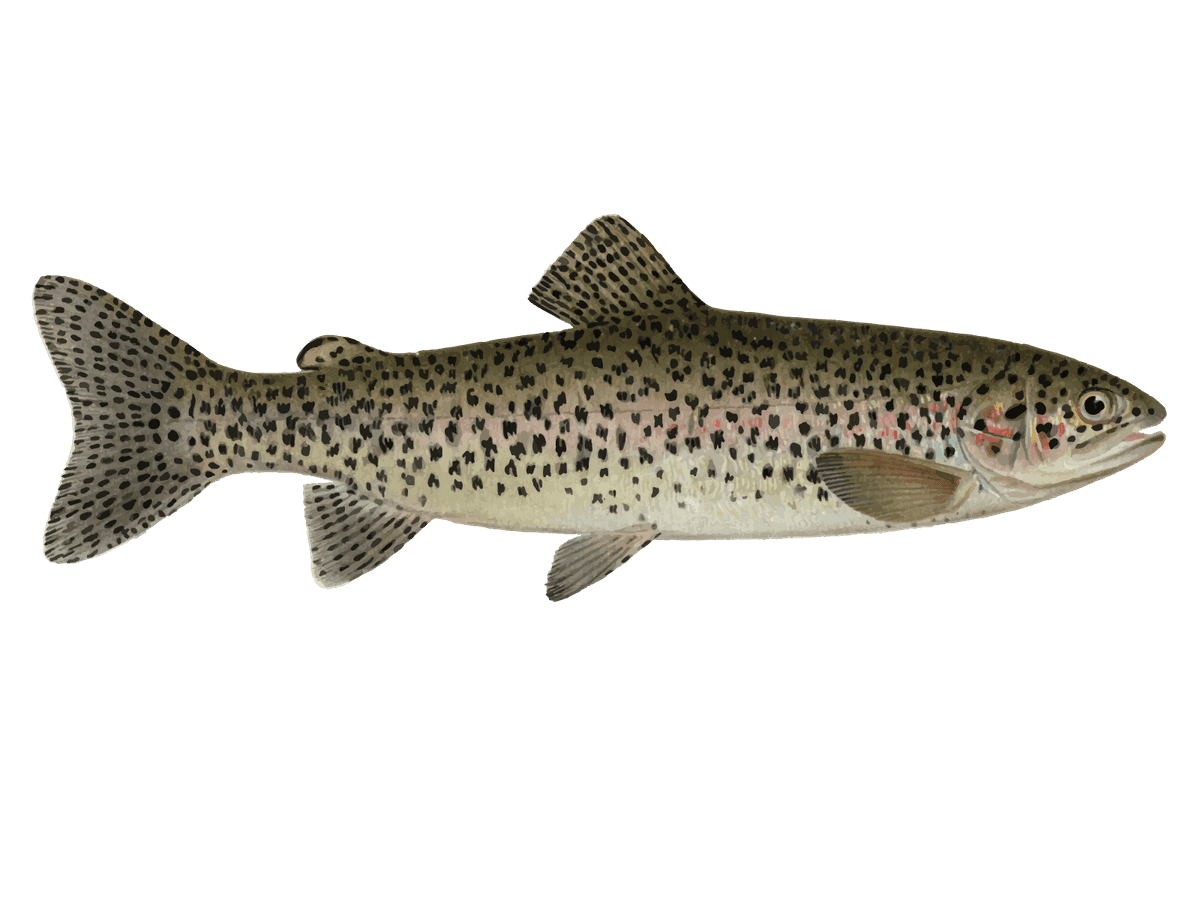Expert-Guided Rogue Winter Steelhead Fishing
- Published Date: July 17, 2025
- Fishing
- Rogue River
- $300 - $450 price range
- Updated Date: August 31, 2025
Summary
%2F%2Fusers%2Ffac08bee-56ec-4380-8d4f-f5fe3da08c58%2Fratecard%2F1737813270788x815221297435055800.png&w=1200&q=75)
Rogue River Steelhead Action


Reel in Rogue River Steelhead: Half-Day Adventure
Ready to tackle some of Oregon's most prized fish? Our half-day Rogue River steelhead trip is your ticket to hooking into these hard-fighting sea-run trout. We'll hit the water where the action's hottest, based on the latest fishing intel. Pack your lunch, grab your license, and let's chase some chrome!
Trip Overview
This isn't your average fishing trip - it's a steelhead quest on one of the West's most legendary rivers. We'll meet at the crack of dawn, load up the drift boat, and hit a prime stretch of the Rogue. Your guide's been chasing these fish for years and knows every riffle and run where steelhead like to hold. We provide all the gear, so whether you're a seasoned angler or it's your first time holding a rod, you're in good hands. Expect to cover a lot of water, learn some new techniques, and hopefully feel that heart-pounding moment when a chrome missile smashes your lure.
On the Water Tactics
Steelhead fishing is all about covering water and persistence. We'll primarily be side-drifting eggs or yarn balls through likely runs, but might switch it up with some plug pulling if conditions are right. Your guide will show you how to read the water, mend your line, and set the hook when a steelhead strikes. We use light tackle to make the most of these fish's acrobatic fights. Don't be surprised if you see us pull over to the bank for some wade fishing in prime spots - sometimes getting your feet wet is the key to success.
Species Spotlight: Steelhead Trout
Steelhead are the anadromous (sea-run) form of rainbow trout, and they're some of the most sought-after gamefish in the Pacific Northwest. Rogue River steelhead average 5-10 pounds, but don't be shocked if you hook into a 15+ pound bruiser. These fish are known for their spectacular fights, often leaping clear out of the water multiple times. Winter steelhead start entering the Rogue in November, with peak fishing usually happening from December through March. What makes them so special? It's the combination of their relative scarcity (you might make dozens of casts between bites), their hard-fighting nature, and the beautiful settings they call home. Landing a wild Rogue River steelhead is a bucket list item for many anglers.
What to Bring
We've got the fishing gear covered, but there are a few things you'll want to pack: - Valid Oregon fishing license (with Columbia River Basin endorsement) - Warm, layered clothing (it can be chilly on the water) - Rain gear (hey, it's Oregon) - Polarized sunglasses - Camera or phone for photos - Lunch and any extra snacks or drinks you want Remember, winter steelhead fishing often means braving some less-than-perfect weather, but that's part of the adventure. The tougher the conditions, the sweeter the reward when you land that chrome-bright fish.
Why Anglers Keep Coming Back
There's something addictive about steelhead fishing on the Rogue. Maybe it's the anticipation of that next big strike. Or the way the mist rises off the river on a crisp winter morning. Perhaps it's the stories and laughs shared in the boat between casts. Whatever it is, once you've experienced it, you'll be itching to get back out there. Our half-day trip is perfect for both newcomers looking to get a taste of the action and seasoned anglers who want to squeeze in some quality fishing time.
Time to Book Your Spot
Don't miss your chance to tangle with one of Oregon's most iconic fish. Our half-day Rogue River steelhead trips fill up fast, especially during peak season. Whether you're looking to scratch that fishing itch, want to learn some new techniques, or just want to experience the beauty of the Rogue in winter, this trip delivers. Book now, and let's go find some chrome! Remember, the best fishing story is always the one you haven't lived yet - and it might just happen on your next cast into the Rogue.
Learn more about the species
Steelhead Trout
Steelhead (Oncorhynchus mykiss) Fish Description
Steelhead (often called steelhead trout) is an anadromous (sea-run) form of the coastal rainbow trout that typically returns to freshwater to spawn after living two to three years in the ocean. Steelhead and Rainbow Trout are actually the same species, but they have different lifestyles. Steelhead spends part of their lives in the sea before going to rivers to breed—while rainbow trout spend their lives entirely in freshwater. Because of this, rainbow trout and steelhead are different in appearance, most noticeably in size and color. Rainbow trout derive their name from their beautiful, multi-hued coloration. Their bodies are blue, green, or yellowish, shading to silvery-white on the underside, with a horizontal pink-red stripe running from the gills to the tail and black spots along their backs. Steelhead is generally more streamlined in shape and silvery or brassy in color as adults, with black spots on their backs earning them their name. Steelhead has a streamlined body. They have black spots on the back and a pinkish-red stripe is present between the tail and the gills. Unlike rainbow trout, its body is more brassy and silvery in color. The anal fins contain 10 -12 rays.
Steelhead Trout Habitat and Distribution
Steelhead trout come and occupy freshwater lakes and streams during their lives. As a protective cover, Steelhead trout use wood, boulders, and vegetation. For spawning, Steelhead trout returns to freshwater bodies for a small period and spends most of their life in sea or estuaries.

Oncorhynchus mykiss is an excellent game fish in northern America.it native to the west of Rockies. But now steelhead trout is introduced in the majority of states. It is also present on all continents. The only place that has no steelhead trout is Antarctica.
Steelhead Trout Weight and Length
The average length of Steelhead trout is 24 inches but there are reports of steelhead trout reaching 45 inches. 55 pounds is the maximum weight that is reported for steelhead trout.
Steelhead trout Interesting facts
- The life expectancy is 11 years.
- Steelhead trout spawn multiple times.
• They are migratory fish.
• Rainbow trout lives all its life in freshwater but steelhead trout spend life in the sea and only come to rivers to breed • Due to time spent in the marine environment, they develop a lot of black spots on the body.
Steelhead Trout Diet
They can eat anything like eggs, crustaceans, mollusks, small fish, and insects in adult age and when they are young they feed on zooplankton.
Steelhead Trout Best Fishing Techniques
The best techniques for this fish are drifting, plunking, back trolling, and fly fishing. For fly fishing, both double and single-handed rods can be equally effective. They can be helpful to drift a nymph rig or swing a fly in the water. Spey rods and switch rods are very popular for fly fishing. The handiest Spey rod is a 13.5-foot 7-weight rod. Steelhead fly fishing is challenging but the reward is a tremendous fight.
Steelhead Trout Baits and Lure
For wet swing, it is better to use number 6-number 8 flies that are tied thinly such as Golden Demon, Skunk, Brad’s Brat, Silver Hilton, Max Canyon, Surgeon General, Purple Peril, and Skykomish Sunrise. You can use a bomber as a dry fly.
Steelhead Trout Migration and Spawning
They show migratory behavior as they spent the majority of their adult years in the sea. They come to freshwater for spawning and then return. On the gravel of freshwater bodies such as tributaries, steelhead trout female lay eggs which are fertilized by the male. They can lay 9000 eggs at a time but it depends on the female steelhead trout size.
Steelhead Trout Season
The best time of year for catching starts in mid-fall and ends in spring. ## The Trout Family Trout are members of the family Salmonidae, order Salmoniformes. The native trout family is closely related to salmon. A top fly fishing family of fish that are both tremendous game fish and tasty eating fish. Found in small streams, large rivers, and any trout stream with the right water temperature, aquatic insects, and clean water. The trout species is usually restricted to freshwater, though a few types migrate to the sea between spawnings. Members of the trout species include Rainbow Trout, Brown Trout, Brook Trout, Lake Trout, Steelhead Trout, Bull Trout, Cutthroat Trout, Apache Trout and several other smaller species.

About the 17' Willie Boats
%2F%2Fusers%2Ffac08bee-56ec-4380-8d4f-f5fe3da08c58%2Fvehicle_picture%2Fimage-2025-01-25t213757.203.png&w=1200&q=75)
Vehicle Guest Capacity: 2
Manufacturer Name: Yamaha
Maximum Cruising Speed: 8
Number of Engines: 1
Horsepower per Engine: 9
%2Fusers%2Ffac08bee-56ec-4380-8d4f-f5fe3da08c58%2Fimages%2Fgrants-pass-fishing-tours-2401.jpeg&w=768&q=75)
%2Fusers%2Ffac08bee-56ec-4380-8d4f-f5fe3da08c58%2Fimages%2Fchinook-salmon-fishing-oregon-2562.jpeg&w=768&q=75)
%2Fusers%2Ffac08bee-56ec-4380-8d4f-f5fe3da08c58%2Fimages%2Fgrants-pass-fishing-tours-2324.jpeg&w=768&q=75)
%2Fusers%2Ffac08bee-56ec-4380-8d4f-f5fe3da08c58%2Fimages%2Fgrants-pass-fishing-tour-2377.jpg&w=768&q=75)
%2Fusers%2Ffac08bee-56ec-4380-8d4f-f5fe3da08c58%2Fimages%2Fdiscover-wonders-oregon-2385.jpg&w=768&q=75)
%2Fusers%2Ffac08bee-56ec-4380-8d4f-f5fe3da08c58%2Fimages%2Fadventurous-fishing-tour-oregon-2376.jpeg&w=768&q=75)
%2Fusers%2Ffac08bee-56ec-4380-8d4f-f5fe3da08c58%2Fimages%2Fgrants-pass-fishing-tours-2344.jpeg&w=768&q=75)
%2Fusers%2Ffac08bee-56ec-4380-8d4f-f5fe3da08c58%2Fimages%2Frainbow-trout-fishing-or-2446.jpg&w=768&q=75)
%2Fusers%2Ffac08bee-56ec-4380-8d4f-f5fe3da08c58%2Fimages%2Frainbow-trout-fishing-tour-or-2440.jpeg&w=768&q=75)
%2Fusers%2Ffac08bee-56ec-4380-8d4f-f5fe3da08c58%2Fimages%2Fmassive-rainbow-trout-oregon-2652.jpeg&w=768&q=75)
